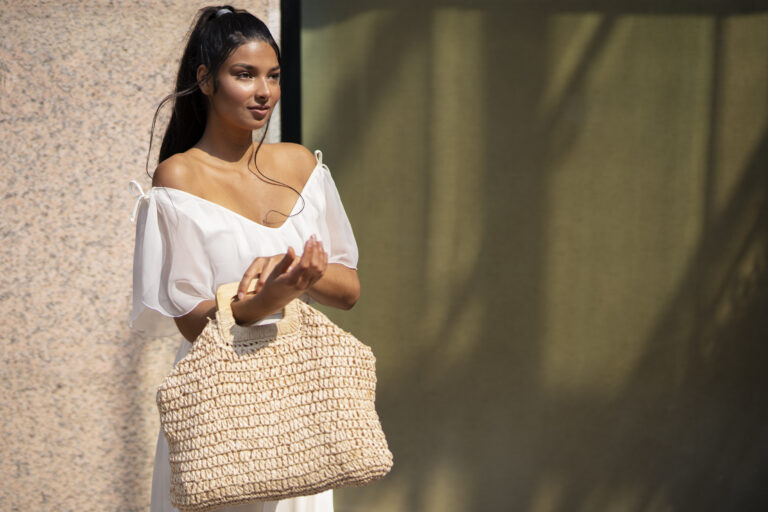Sewing Mastery: How to Make a Perfect Buttonhole in 10 Steps
A well-made buttonhole not only looks professional, but it also ensures that the button will stay securely in place. In this blog post, we will walk you through a 10-step process on how to make a perfect buttonhole.
By the end of this tutorial, you’ll have the skills to master buttonhole-making and achieve a polished and professional-looking finish to your projects.
How to Make a Perfect Buttonhole in 10 Steps
When you make a garment or sewing project that requires buttons, making a perfect buttonhole is a crucial step. here are the 10 steps on how to make a perfect buttonhole.
Also read: How To Thread A Needle | 6 Easy and Quick Steps + Tips and Tricks to Use
Step 1: Choose the Right Button and Fabric
Before you begin making your buttonhole, you need to choose the right button and fabric for your project.
The size and shape of your button will influence the size of the buttonhole, so make sure to have the button on hand before you start.
Most machines come with a buttonhole foot that can be adjusted to fit different sizes of buttons. It’s also important to consider the weight and type of fabric you’ll be using.
For example, a thicker fabric like denim or canvas will require a larger buttonhole than a thinner fabric like cotton or silk. It’s important to choose a button that complements the fabric, is functional, and aesthetically pleasing.
Step 2: Mark the Buttonhole Placement
After you’ve chosen your button and fabric, the next step is to mark the buttonhole placement. You can use a fabric pen or tailor’s chalk to make these marks.
Be sure to mark where the top and bottom of the buttonhole will be, as well as the width of the buttonhole. If your machine has a buttonhole foot, it will have markings to help you position the buttonhole correctly.
If not, measure and mark the buttonhole placement carefully to ensure that it’s straight and centered.
Step 3: Set Up the Sewing Machine
Once you’ve marked the buttonhole placement, it’s time to set up your machine. Most modern sewing machines come with a buttonhole foot that makes it easy to sew buttonholes.
The buttonhole foot will have a guide that you can adjust to fit the size of your button. The guide ensures that the buttonhole is the correct size and that it’s placed in the correct location on your garment.
Before you start sewing, test your machine settings and stitch length on a scrap piece of fabric to make sure everything is working correctly.
Step 4: Create the First Side of the Buttonhole
Once the sewing machine is set up, it’s time to start sewing the buttonhole. Begin by sewing the first side of the buttonhole.
To do this, position the fabric under the needle with the marked line in the center of the presser foot.
Lower the needle and presser foot and start sewing, following the marked line. Sew slowly and steadily, keeping the fabric straight as you go.
It’s important to make sure the stitch is straight and doesn’t veer off course, as this will affect the final appearance and functionality of the buttonhole.
If you find it hard to sew straight, you can try using a guide, such as a seam gauge, to keep the stitching aligned with the marked line.
Step 5: Reinforce the Ends
After sewing the first side of the buttonhole, it’s time to reinforce the ends. This step is essential to prevent the buttonhole from unraveling over time. One of the most common methods of reinforcement is using a bar tack stitch.
To create a bar tack stitch, sew in place at the end of the buttonhole for a few stitches. Then, with the needle down, turn the fabric 90 degrees and sew back across the buttonhole.
Repeat this process a few times, depending on the size and thickness of the buttonhole. This will secure the end of the buttonhole and prevent it from fraying.
Step 6: Cut the Buttonhole Open
Now that you’ve reinforced the ends of the buttonhole, it’s time to cut it open. However, you need to be very careful not to accidentally cut the stitching.
One way to do this is to use a seam ripper or small scissors. Gently insert the seam ripper or scissors into one end of the buttonhole, being careful not to cut through the stitches.
Then, slowly and carefully cut the buttonhole open.
Step 7: Create the Second Side of the Buttonhole
Next, you’ll need to sew the second side of the buttonhole. This is done in much the same way as the first side.
However, it’s important to make sure that the second side matches up with the first side in terms of length and placement.
If the two sides don’t match up, the button may not fit through the buttonhole.
Step 8: Reinforce the Second End
After completing the second side of the buttonhole, reinforce the end in the same way as you did with the first end. Again, this will help prevent fraying and maintain the shape of the buttonhole over time.
Step 9: Finish the Buttonhole
Once you’ve sewn the buttonhole, it’s time to tie off the thread and trim any loose ends. You can use a hand sewing needle to weave the thread back into the fabric or tie a knot close to the hole and trim the thread.
Make sure to cut the thread close enough to the knot, so it doesn’t become visible after you press the garment.
Pressing the buttonhole is an essential step to make it look its best. Use a hot iron and press the buttonhole flat, using a pressing cloth to protect the fabric.
Pressing will help to set the stitches and shape the buttonhole. You can also use a buttonhole cutter to open the buttonhole and create clean edges.
Step 10: Attach the Button
Now that you’ve completed the buttonhole, it’s time to attach the button. Start by placing the button through the buttonhole and positioning it where you want it to be on the garment.
Use a hand sewing needle and thread to secure the button in place, making sure to sew it through all layers of the fabric.
To ensure the button is secure and aligned with the buttonhole, you can use a button-sewing technique called “shank.”
To create a shank, insert a toothpick or a button spacer between the button and the fabric before sewing it in place.
This will create a small gap between the button and the fabric, allowing the button to sit correctly and preventing it from popping off.
Conclusion
To make a perfect buttonhole, you need patience, practice, and attention to detail. By following these 10 steps, you’ll be able to create a buttonhole that looks great and functions correctly.
Remember to choose the right button and thread, mark and cut the buttonhole precisely, and finish and attach the button securely.
Don’t be discouraged if your first few buttonholes aren’t perfect. Keep practicing, experiment with different techniques and tools, and you’ll soon be making buttonholes that look like they were done by a professional.
With a little practice, you’ll be able to create buttonholes that are not only functional but also add a touch of elegance to your garment.




